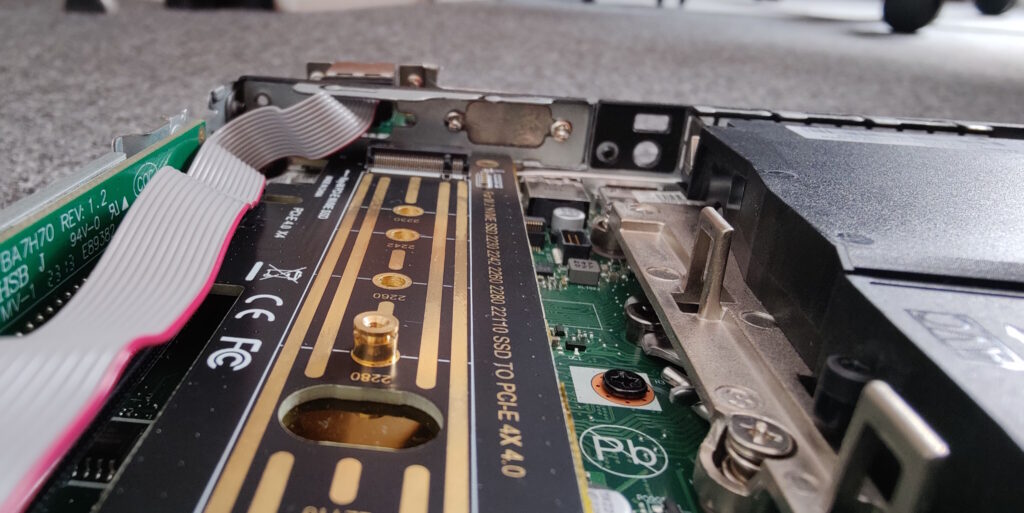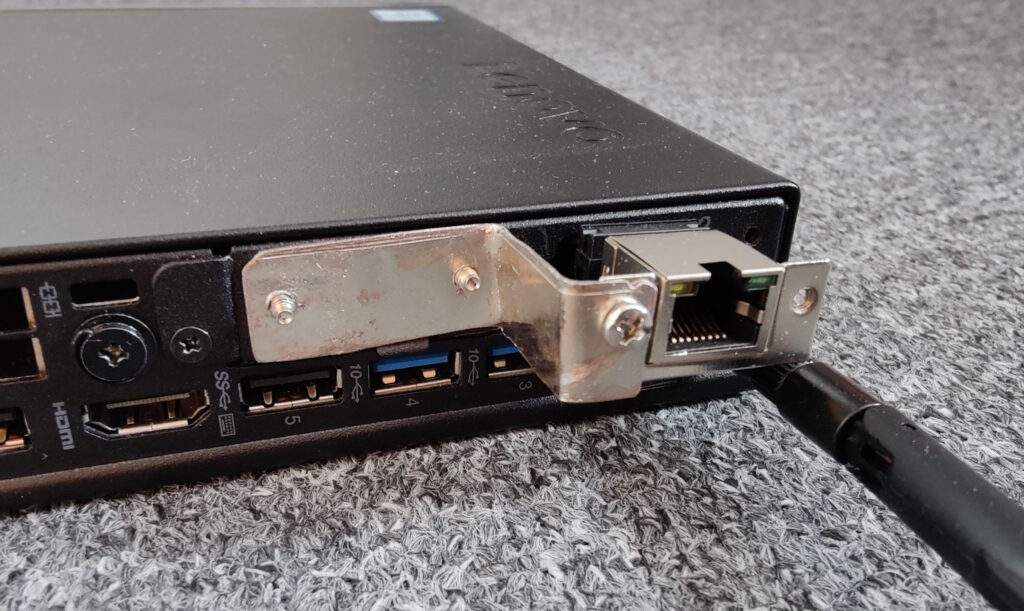I recently have started renting out some collocation space at a local datacentre, to run my external services, renting hardware from OVH is great, but I could never quite get the specification I wanted for the right price. I purchased some new hardware for this including a Lenovo M920Q.
I have two Proxmox Virtualisation hosts at the collocation, one big one that runs the majority of my services and then the second one which runs my monitoring VM on the Lenovo M920Q. The two hosts are in a cluster with a pi running as a quorum vote. I replicate VMs between each of the hosts, so critical services can still run in the event of one Proxmox host failing. To enable this I have a dedicated migration network for the data transfer, so I can send the replication data without interfering with other normal network traffic, the hosts are directly connected, so I also turned off encryption of this traffic. The first host already had a second NIC I can use for this but the Lenovo M920 only has the one NIC. I’ve seen many people add a second NIC via a WiFi M.2 slot, so I attempted it and added a second one myself.
Getting hold of an M.2 to ethernet adapter is pretty easy and you can find them on eBay, Amazon or Aliexpress, you can also get them in 1gbit and 2.5gbit. The main issue with them is physical installation, where do you fit the second NIC itself too, you don’t really want it flapping in the wind. There’s no real location I could find to fit the specific NIC I purchased inside, so I ended up trying to mount it externally to the case.
Since I don’t own a 3d printer, I thought of ways to accomplish this with what I had laying around of which was an PCIe full height bracket from an old PCIe card. First I tried using a black one to match the case but it’s no good if the metal of the bracket is too malleable, what you want it something you can’t quite easily bend. Otherwise if you tug the ethernet cable it just bends the bracket you make. I ended up using a thicker bracket which was silver not black sadly but it was much harder to bend.
After some bending, grinding and filling on the vice. I made an Z shaped bracket. I put two holes in it to mount to the back of the Lenovo, then a single hole to mount the NIC itself too. Not the neatest job, but good enough to be installed in a collocation where no one will see it. See the photos below.



